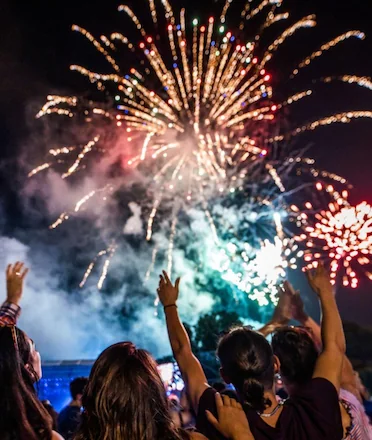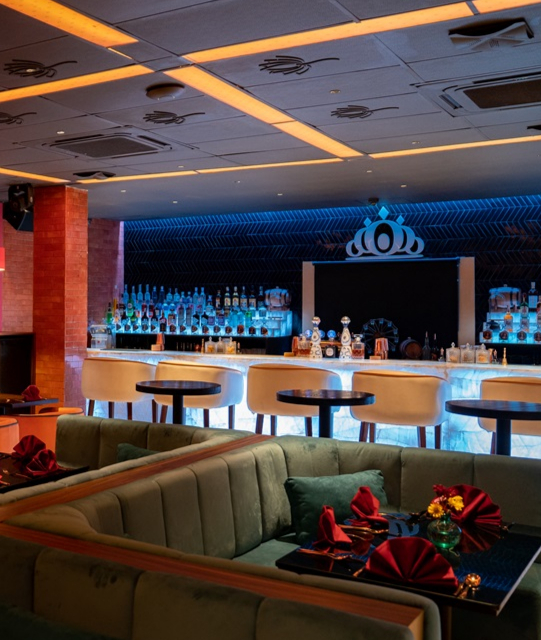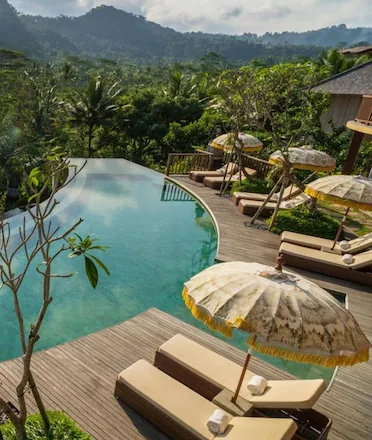Bali is famous for beaches and temples, yet its charm shines brightest in the quiet pockets scattered across the island. These villages offer glimpses into centuries old traditions, lush landscapes, and the kind of cultural depth that turns a simple stroll into a memory. From Bali Aga enclaves to artisan hubs and serene countryside escapes, here are some of the most beautiful villages in Bali that promise authentic stories, soulful encounters, and plenty of reasons to wander off the busy tourist trail.
Bali Things To-Do Ultimate Guide

Amed
Stretches along Bali’s tranquil eastern coastline, Amed Village is admired for its dramatic landscapes, black-sand beaches, and clear waters. The area is a haven for divers and snorkelers who come to explore vibrant coral reefs and the iconic USAT Liberty wreck in nearby Tulamben. Traditional salt-making huts, calm fishing communities, and views of Mount Agung create a setting filled with local charm. Amed is ideal for travelers seeking slow coastal living, underwater beauty, and scenic sunrise moments over the Bali Sea.
Batuan
Batuan Village is known for its traditional paintings that portray Balinese life through intricate visuals and deep symbolism. Visitors can explore galleries filled with fine art created in the village’s distinctive style. You will also find skilled woodcarvers and dancers who keep the cultural rhythm alive. A trip to Batuan is perfect for travelers who want to understand Balinese art in its most unfiltered form.
Batubulan
Batubulan Village is a lively creative hub where traditional performances take center stage. Visitors can watch Barong, Kecak, and Legong dances presented by talented locals with incredible energy. The village is also home to stone and wood carvers who craft statues admired across Bali. Many believe that pieces created in Batubulan carry a unique spiritual essence. The village sits along the main route from Denpasar to Gianyar, making it easy to explore.
Carangsari
Carangsari Village is often called the Historical Village since it is the birthplace of national hero I Gusti Ngurah Rai. Walking through the village reveals traces of Bali’s past, complete with colonial era stories and traditional architecture. Visitors can enjoy whitewater rafting on the Ayung River, soaring fun at the LeKaja Bali Swing, and a sweet visit to a nearby chocolate plantation. Carangsari blends history, nature, and soft adventure in one scenic pocket.
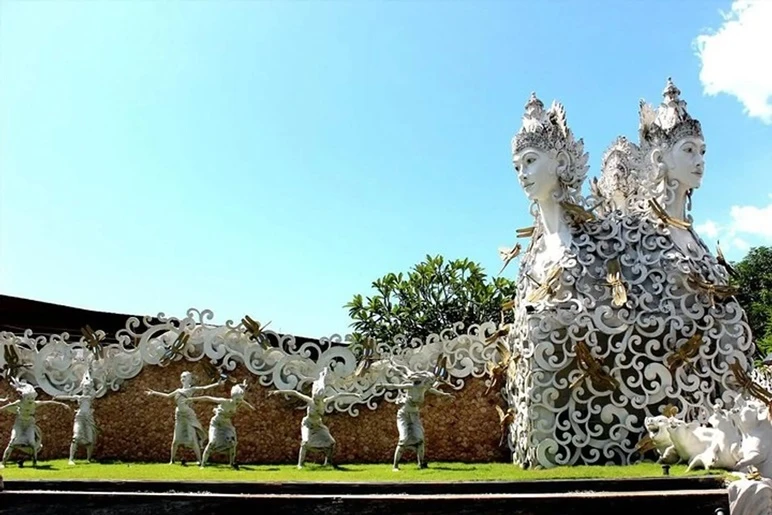
Celuk
Celuk Village is Bali’s home of gold and silver craftsmanship, where nearly every household is involved in making jewelry. Travelers can browse showrooms filled with finely crafted pieces or join workshops to create custom designs. Located near Sukawati in Gianyar, Celuk is easy to combine with trips to the surrounding regions. It is the ideal stop for lovers of handmade creations and beautiful keepsakes.
Kertalangu
Kertalangu Village invites visitors to experience traditional farming activities in a peaceful rural setting. The community preserves ancient agricultural techniques that showcase Bali’s deep connection with the land. Travelers can observe rice cultivation and learn how locals maintain a harmonious rhythm between people and nature. The village’s gentle atmosphere makes it a refreshing escape from the busy city areas.
Kerambitan
Kerambitan Village in Tabanan carries a graceful blend of royal history and mystical charm. The area once served as a seat of the Tabanan kingdom, and many palaces still stand as reminders of that era. Puri Agung Kerambitan and Puri Anyar Kerambitan welcome visitors into courtyards and pavilions that echo stories of noble gatherings. Occasional cultural events breathe life into the ancient compounds and offer a look into a world that still feels wonderfully alive.
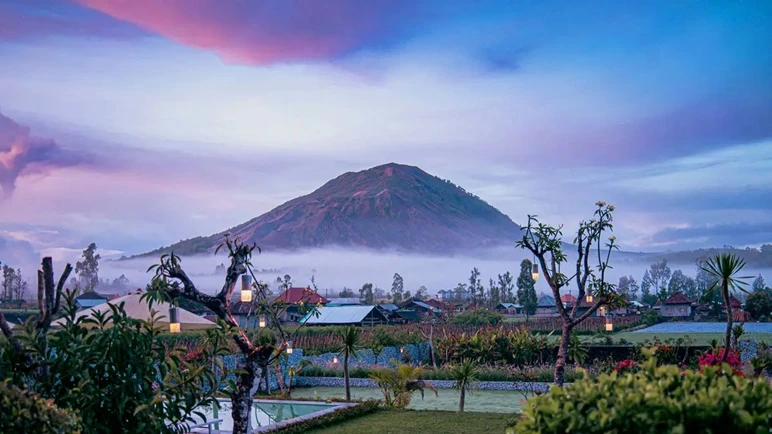
Kintamani
Kintamani is a highland region filled with cool mountain air, scenic viewpoints, and traditional villages. Travelers come to admire volcanic landscapes, crisp lakeside panoramas, and rural communities that maintain close ties to the environment. Local architecture reflects ancient Balinese designs that prioritize balance and simplicity. A visit to Kintamani always feels calming thanks to the region’s natural beauty and gentle pace.
Mas
Mas Village is celebrated for its masterful woodcarving tradition. Walking through the village allows you to observe artisans shaping intricate figures with incredible skill. The carvings feature cultural motifs and storytelling elements that make Balinese art globally recognizable. One of the most famous galleries in the village is Nyana and Tilem, which exhibits works from multiple generations. Mas is an essential stop for art lovers and curious travelers.
Pemuteran
Pemuteran Village sits along Bali’s quiet northwest coast, offering tranquil beaches and a strong commitment to sustainability. The community has received recognition from the United Nations World Tourism Organization for its eco friendly efforts. Coral restoration projects, community led initiatives, and responsible tourism practices make Pemuteran a standout example of harmony between people and nature. The area is ideal for travelers seeking peace, underwater beauty, and heartfelt local hospitality.
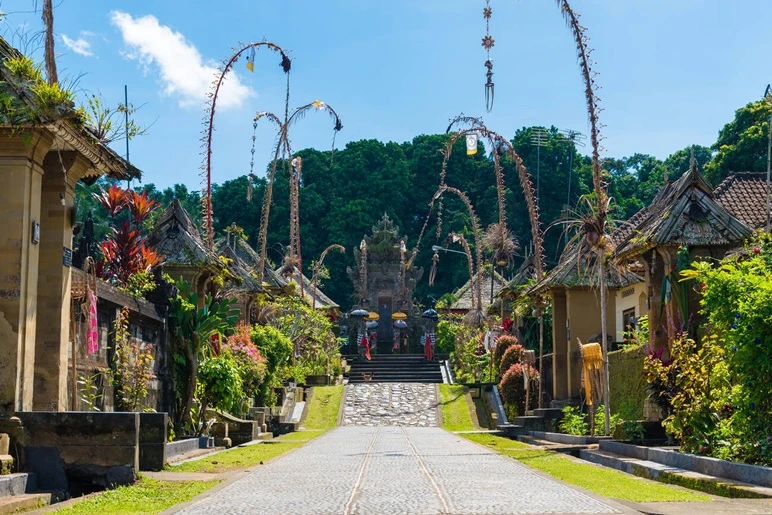
Penglipuran
Penglipuran Village is known for its pristine environment and cool mountain breeze at around 700 meters above sea level. The village is praised globally for its cleanliness, earning a spot among the world’s cleanest villages. Visitors are greeted by neat lanes, traditional architecture, and a calm ambience. The best time to visit is during Galungan when rows of decorative penjor line the streets and transform the village into a cultural postcard.
Sembiran
Sembiran Village rests in the northern highlands and is one of Bali’s oldest settlements. The Bali Aga community here follows customs that date back to pre Majapahit times. The village layout, ancestral rituals, and traditional houses create an atmosphere that feels incredibly timeless. Travelers can immerse in a heritage that has remained intact across generations. Sembiran offers rare insight into the roots of ancient Balinese culture.
Sidemen
Sidemen Village is beloved for its green rice terraces and peaceful countryside charm. Visitors can join guided walks that explore traditional ways of life shaped by farming and community values. Friendly locals often share stories about rituals, craftsmanship, and their connection to the surrounding landscape. Sidemen’s serene scenery makes it a favorite retreat for those craving a slower pace.

Tenganan
Tenganan Pegringsingan Village in Karangasem is one of the most well preserved Bali Aga communities. The village maintains ancient rules, ceremonies, and architectural styles that distinguish it from other parts of the island. Tenganan is particularly famous for double ikat textiles and selunding gamelan music. Visiting during Mekare Kare in June or Perang Pandan in July allows travelers to witness rare cultural traditions filled with honor and symbolism.
Tigawasa
Tigawasa Village lies in the northern mountains and presents a living example of Bali Aga heritage. The community stretches across fertile highlands surrounded by rivers, forested slopes, and cool breezes. Locals preserve a lifestyle that values communal harmony and ancient rituals. The scenery and cultural depth combine to create a meaningful experience for visitors who enjoy village tourism.
Trunyan
Trunyan Village sits on the shores of Lake Batur and is renowned for its unique funeral tradition practiced by the Bali Aga people. Instead of cremation, bodies are placed in bamboo structures and allowed to rest naturally. A sacred tree near the burial site absorbs odors, creating a setting that feels strange yet profoundly spiritual. The village is accessible by boat and offers a distinctive blend of landscape, heritage, and ancestral custom.



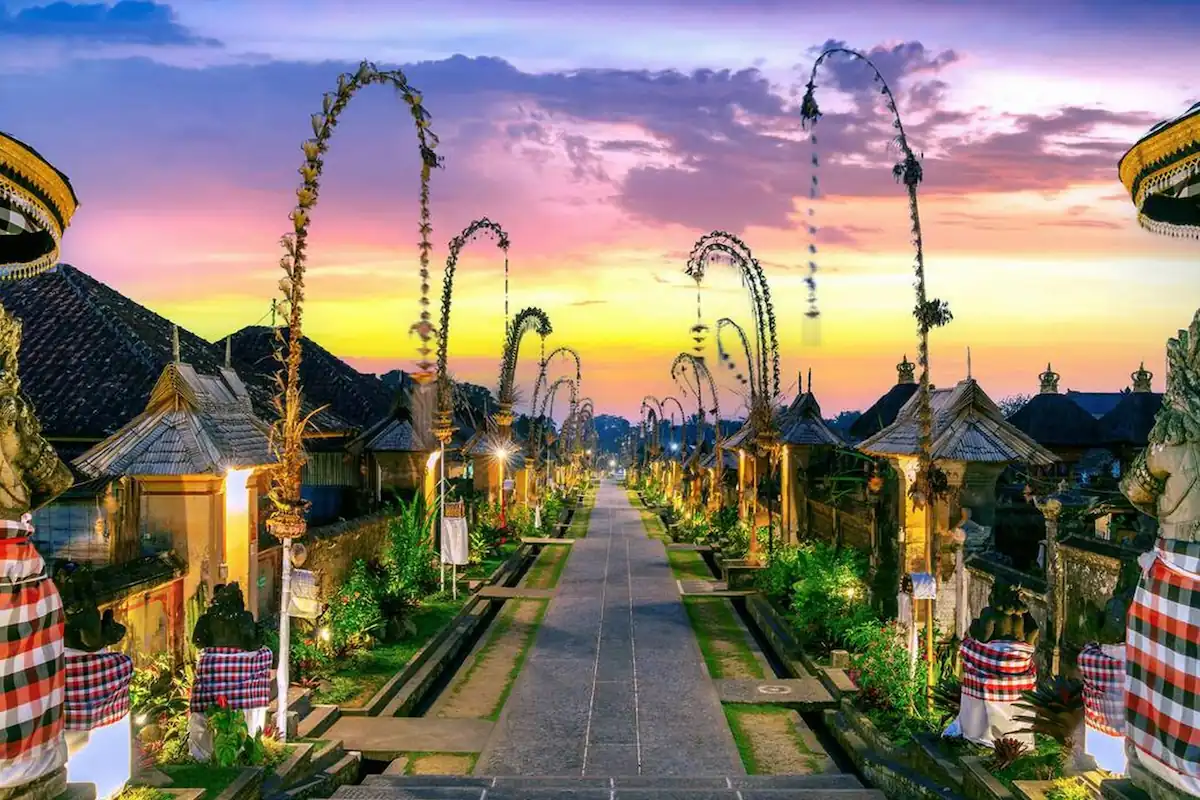
 Billy Bagus
Billy Bagus
 Dec 16, 2025
Dec 16, 2025
